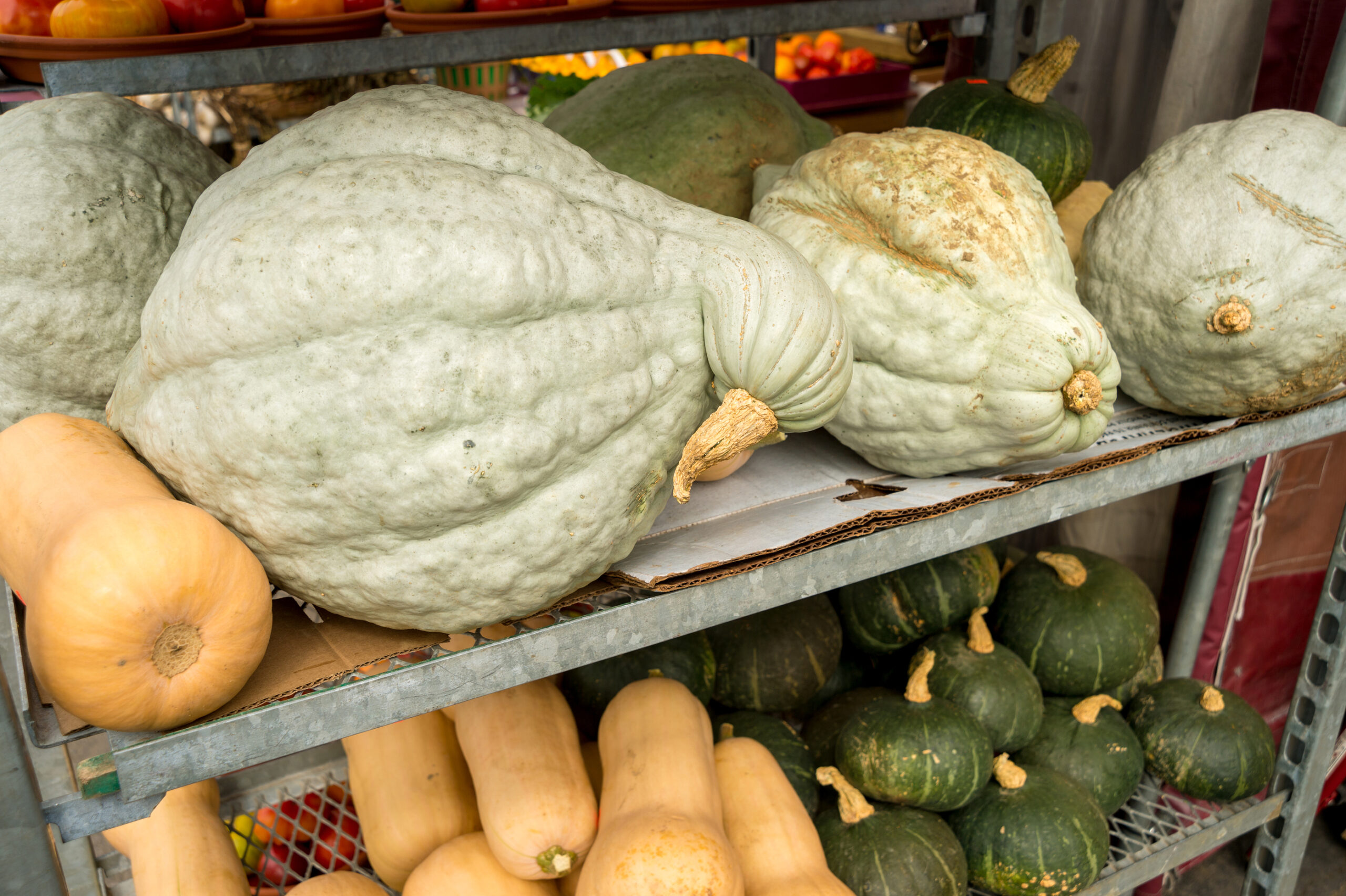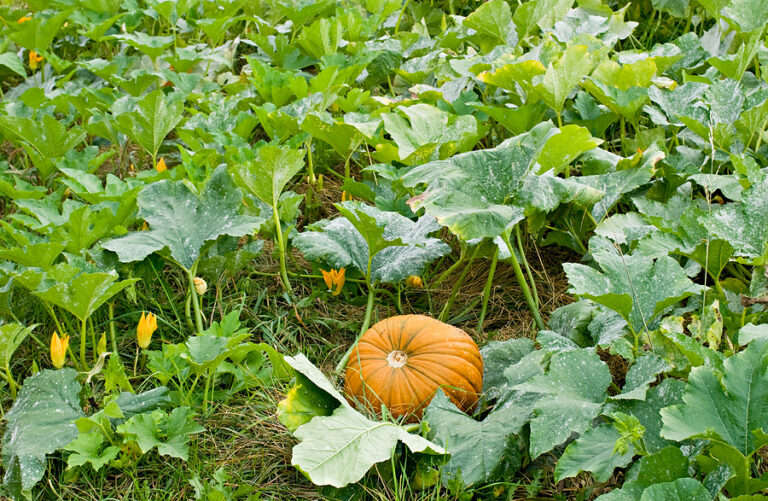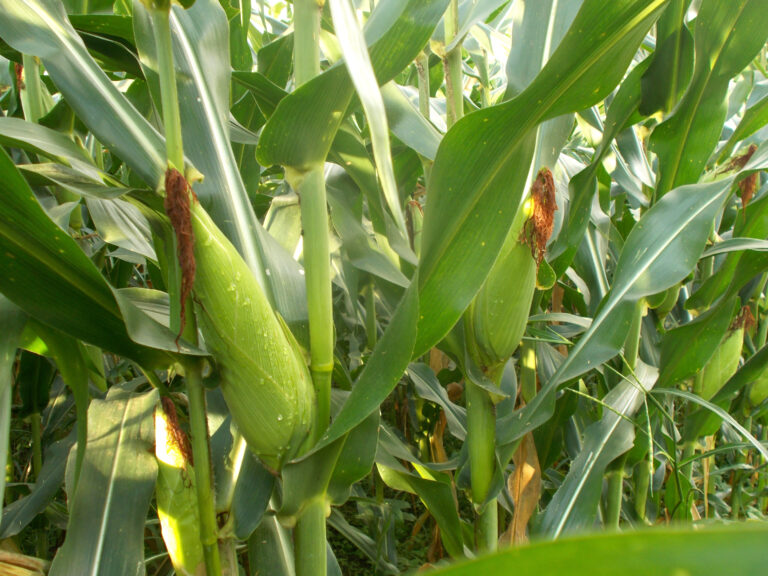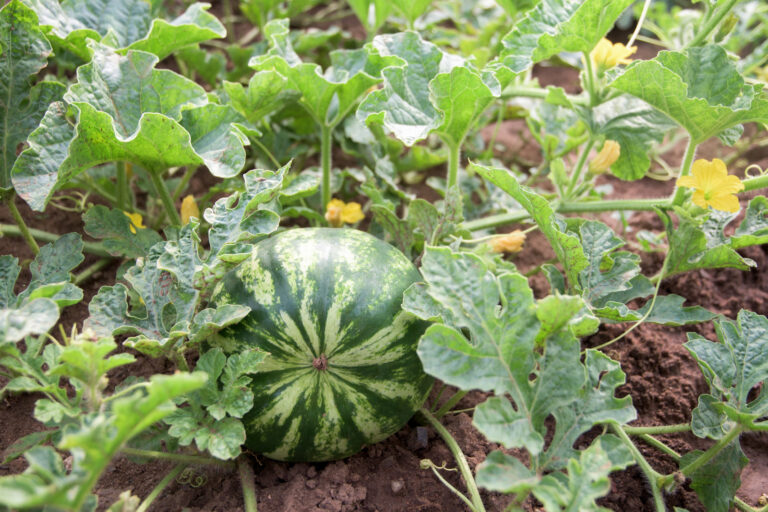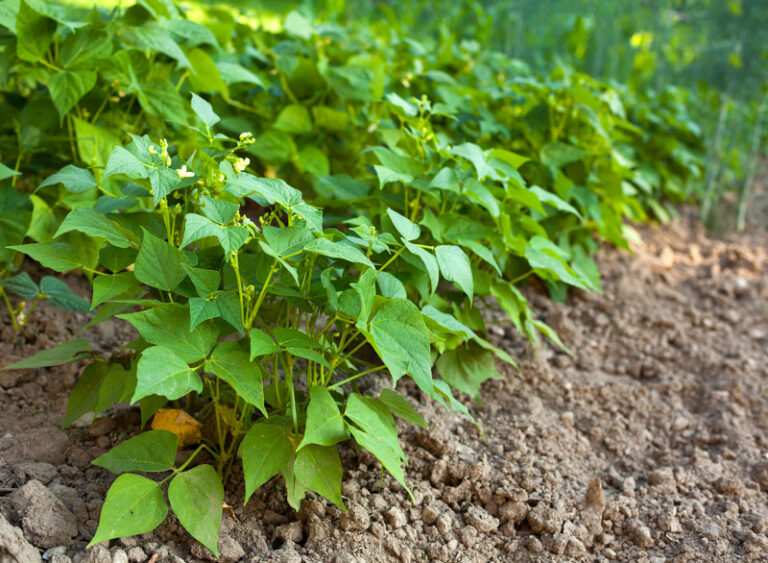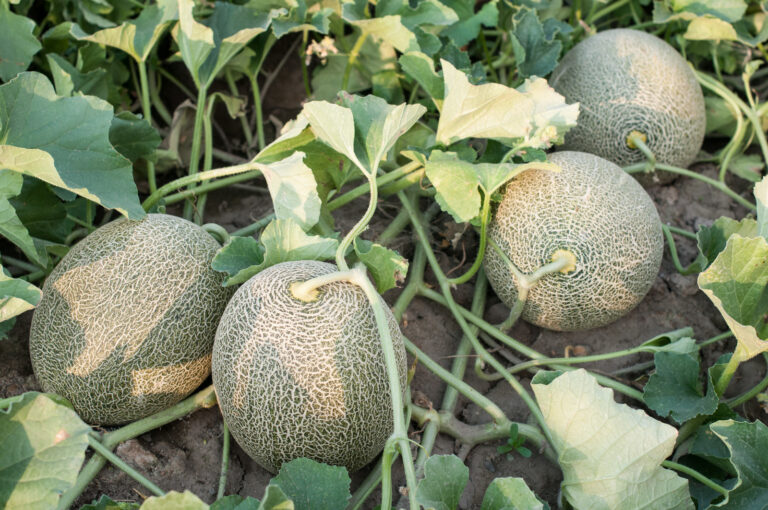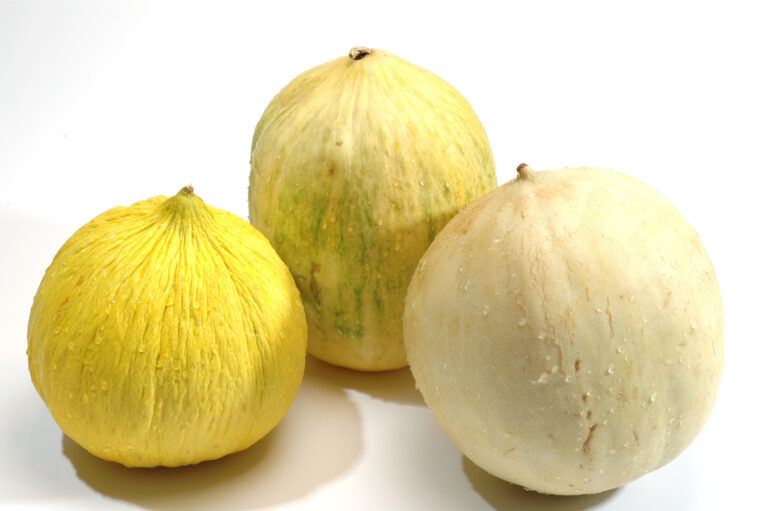The Best Winter Squash Varieties for Your Garden
With so many winter squash varieties to choose from, how do you know which ones will thrive in your garden and suit your cooking needs? Over the years, I’ve grown a wide range of winter squash, from classic butternut and acorn to unique heirloom varieties like ‘Red Kuri’ and ‘Galeux d’Eysines.’ Through hands-on experience, I’ve learned which types store the longest, produce the best yields, and have the richest flavors for soups, roasting, and baking.
In this guide, I’ll introduce you to more than 20 winter squash varieties, sharing insights on their growing habits, flavor profiles, storage potential, and best culinary uses. Whether you’re looking for a sweet, nutty squash for roasting, a small-space variety for trellising, or a long-storing option for winter meals, this list will help you find the best fit for your garden.
Let’s explore the best winter squash varieties and find the perfect ones for your next growing season!
Winter Squash Varieties to Grow
Winter squash varieties include acorn, banana, buttercup, butternut, cushaw delicious, Hubbard, marrow, spaghetti, turban, and pumpkins.
- Acorn: Autumn Queen, Bush Table Queen, Carnival, Cream of the Crop, Ebony Acorn, Gill’s Golden Pippen, Heart of Gold Jape, Table Ace, Table Gold, Table King, Table Queen Tay Belle, stuffy Acorn.
- Banana: Pink Banana Jump.
- Butternut: Early Butternut, Harris Butternut, Nicklow’ Deligh, Ultra Neck Pumpkin, Waltham Butternut, Zenithg Butternut.
- Hubbard: Baby Blue Hubbard, Little Gem, New England Blue Hubbard, Sweet Meant, Warted Chicago Hubbard.
- Spaghetti: Pasts, Pasts Spaghtetti, Stripetti, Tivoli Spahgetti, Vegetable Spaghette.
- Sweet Potato: Delciats, Sugar Lpoad, Sweet Dumpling, Thelma Sander’s Sweet Potato.
- Turban: Amercup, Autumn Cup, Bitterroot, Burgess Buttercup, Buttercup, Churimen Abobora, Emerald Bush, Honey Delights, Sweet Mama, Turk’s Turban.
- Other: Doe, Flat Whtie Boer, Futtsu Early Balck, Gold Nugget, Hope Pale Grey, Lower Salmon River, Mayo Blusher, Red Kurti, silver Bell, Sweet Meat, Tahitian.
- Novelty: Luffa, Pasta, Stripetti, Tivoli Spaghetti Turk’s Turban, Vegetable Spaghetti.
Winter Squashes for Cooking
Butternut squash, acorn, and Delicata squash, Hubbard, and kabocha squash—all of these are winter squashes—you cook and serve them when the weather turns cold.
Winter squashes are grown in the summer just like summer squashes, but instead of picking and serving them tender and immature (like summer squash), winter squashes mature on the vine, are harvested just a few days before the first frost in autumn, and are cured and stored for eating one, two, or three months later—autumn into winter into early spring. They gain flavor as they age.
Serve winter squashes diced and sautéed as a side dish, baked, mashed, and simmered in stock as a soup, in gratins with potatoes, moistened with stock or water and baked, in risotto, or simply puréed enriched with butter. Winter squashes are mostly sweet tasting, many with a flavor reminiscent of sweet potatoes.
Three types of winter squash
There are more than 650 different varieties of winter squashes, but there are just three basic types:
- Those for eating in the fall—acorn, Delicata, and spaghetti squash; species Curcurbita pepo.
- Those for eating in early- to mid-winter—buttercup, banana, Hubbard, and kabocha squash; species Curcurbita maxima.
- Those for eating in late winter and early spring—butternut squash; species Curcurbita moschata.
Choose winter squashes on when you plan to eat them, their flavor, and how you want to cook them.
Here are the three types of winter squashes and recommended varieties in each species:
Squashes for eating in the fall: acorn, Delicata, and spaghetti squash (species Curcurbita pepo).
Curcurbita pepo squashes don’t keep quite as long in storage as those from the other two species, just a few weeks of storing will intensify their flavor. C. pepo squashes turn orange or develop orange spots on their rinds. When the orange spots darken and the stems and skin grow hard, these squashes are ready for harvest. Grow these squashes across most regions.
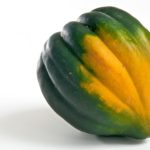
• Acorn squash (C. pepo) has a sweet, nutty flavor, but is less sweet and drier than many other winter squashes. Acorns are small- to medium size with fluted dark green rinds (acorn-shaped) with orange, yellow, or creamy white streaks. The flesh is pale yellow or pale orange. Acorns mature in 90 days and can be grown in most regions including the cool, short-season areas.
Three acorn squashes worth growing are Golden Acorn, Tuffy, and Table Ace. Golden Acorn, also called Table Gold, has the best flavor of the 25 acorn varieties. It has golden orange skin, grows on a compact bush plant, and is ready for harvest in 90 days. Tuffy is sweeter than the average acorn squash with semi-dry flesh well suited for baking; Tuffy is ready in 90 days and intensifies in flavor within a couple of weeks of curing. Table Ace is a smooth tasty acorn growing almost bush-like; it has a dark green rind and is ready in 85 days.
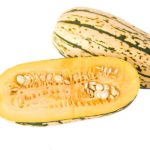
• Delicata squash (C. pepo) has moist, fine-grained, yellow flesh, and outstanding flavor reminiscent of sweet potato. Delicata has edible skin and is well suited for roasting and grilling. It is an heirloom dating from 1894 ready to harvest in 90 to 120 days. Delicata weighs 1 to 2 pounds and is long and cylindrical with a pale yellow rind that is striped or mottled in shades of cream, green, and orange. Sugarloaf is a sweet-flavored Delicata-type squash shaped like a pumpkin weighing 1½ pounds. Delicata JS is flavorful, oblong, green, and white-striped weighing 1½ pounds.
• Dumpling squash (C. pepo) is a sweet potato-flavored fruit with tender flesh suited for roasting. It is small (just ½ pound), globe-shaped, green and white striped, and grows on short vines ideal for small gardens. Sweet Dumpling is a recommended variety.
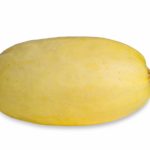
• Spaghetti squash (C. pepo) is an oblong squash with slightly nutty-flavored, stringy, noodle-like, gold-yellow flesh that is often cooked as a pasta substitute. Spaghetti squash can be boiled or baked and topped with marinara or creamy white sauce. One squash is enough for a family meal. It is yellow-skinned and ready for harvest in 73 days and should be used within three months of harvest. It is widely grown. Hasta La Pasta is a spaghetti variety with oblong fruit 6 to 8 inches long growing on compact plants.
Squashes for eating in early- to mid-winter: buttercup, banana, Hubbard, and kabocha squash (species Curcurbita maxima).
Curcubita maxima squashes are dry fleshed and rich flavored, well suited for baking. They grow sweeter with storage reaching the peak of flavor in mid-winter. These squashes are good keepers, lasting two months in storage. They grow big on sprawling vines and tolerate both cool and dry, arid growing conditions. They are ready for harvest when at least three-quarters of the stem’s surface has turned dry and corky, in 105 to 120 days.
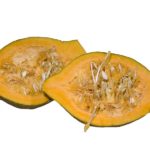
• Hubbard squash (C. maxima) is a mild-flavored, medium to large round squash with nearly pointed ends and a lumpy body usually green to blue-gray. The flesh is grainy and yellow-orange. Use this squash for baking, pies, and soups and as a substitute for pumpkin in recipes. Hubbards are ready to harvest about 100 days after sowing.
• Banana squash (C. maxima) is a mild-flavored and hefty fruit, weighing up to 30 pounds or more. Banana squash is long, cylindrical with green-gray or pink rinds and orange flesh. Blue Banana and Pink Banana are the most flavorful. Blue Banana is gray-green skinned and bears fruit 25 to 30 pounds. The fruit is ready for harvest in 105 to 120 days. Pink Banana has deep pink fruits weighing 15 to 30 pounds and is ready for harvest in 100 to 120 days.
• Buttercup squash (C. maxima) is sweet potato flavored with slightly moist (semi-dry) flesh. Buttercup is a squat, round, and dark green squash with a button or turban on the blossom end. The fruit is slate gray or dark green with pale stripes and weighs 3 to 5 pounds. Buttercup is ready for harvest 90 to 100 days after sowing. Three tasty buttercup varieties are Bitterroot Buttercup which weighs 2½ to 4 pounds and is very sweet; Mooregold which weighs 3 to 4 pounds and has excellent flavor; and Autumn Cup which weighs 3 to 5 pounds and grows on a semi-bush vine, a good choice for small spaces.
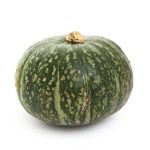
• Kabocha squash (C. maxima) is a sweet-tasting squash after several weeks of storing—prepare in mid-winter. It has a smooth but dry, flaky flesh well suited for baking or mashing. It is round, dark green, or orange-skinned and large weighing 20 pounds or more (kabocha means pumpkin in Japanese). Kabochas grow well in drier climates but are adapted to most regions. They are ready for harvest in 90 to 100 days. Two tasty kabocha varieties are: Cha-Cha a small 4 to 5-pound hybrid that stores well and has fine flavor, and Johnny JWS 6303 which weighs up to 4 pounds has a dark green rind and sweet dry flesh.
Squashes for eating in late winter and early spring—butternut squash (species Curcurbita moschata).
Curcurbita moschata squashes store long, well into late winter and early spring. They include the butternut squash, the Long Island Cheese squash, and several semi-tropical and tropical squashes. These squashes have solid stems and so are unattractive to squash vine borers, which plague many squashes. They like heat and humidity and do well in very warm climate gardens. Because they ripen late they are not a good choice for short-season gardens.
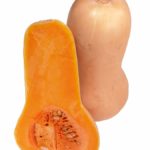
• Butternut squash (C. moschata) is the tastiest—sweet, creamy, and nutty flavor, the most widely adapted of this species, and easiest to grow. It is most flavorful after three months of storage and so can be enjoyed late winter to early spring. Butternut is large, elongated, and pear-shaped with a smooth yellow to butterscotch-colored shell and orange flesh. It is ready for harvest about 105 days after seeding when the fruits turn from pale tan to dark tan, just before frost hits. Butternut squashes should be cured in a warm, dry place for several days immediately after harvest to seal the skins and dry out the stems. Then they should be stored in a dry, airy space. There are 200 varieties of butternut squash. Good choices are: Waltham Butternut which weighs 3 to 6 pounds, has light tan fruit, and grows on a vigorous, productive vine; Butternut Supreme which grows on short vines and is suited for a small garden; Burpee’s Butterbush which has fruit weighing just 1½ pounds on a compact vine; and Nicklow’s Delight a semi-bush hybrid for small gardens that does well in hot summer regions.
More winter squash varieties for cooking
- Acorn (C. pepo): somewhat oval and acorn-shaped with ribbed, dark green skin, and orange flesh. The flesh is tender and fine-textured with a flavor that hints of hazelnuts and pepper. To prepare, remove the seeds and bake. You can eat this one directly from the shell. This variety keeps for 30 to 50 days.
- Banana (C. maxima): a cylindrical squash that can grow between 20 and 24 inches (51-60 cm) long and about 6 inches (15 cm) in diameter. The banana squash can be ivory or pinkish or bluish-gray skinned with firm, fine-textured, orange flesh.
- Buttercup (C. maxima): a variety of turban winter squash. It ranges in size from 4 to 8 inches (10-20 cm) in diameter and from 2 to 3 inches (5-7.5 cm) tall. It has a light blue-gray turban crown with a dark green shell flecked with gray. The flesh is orange and tastes a bit like a sweet potato. This squash can be baked, steamed, or simmered. This buttercup will weigh about 3 pounds (1.4 kg) and can be stored for about 1 month.
- Butternut (C. moschata): large, cylindrical to pear-shaped from 8 to 12 inches (20-30 cm) long and 3 to 5 inches (7.5-13 cm) in diameter. This winter squash can weigh from 2 to 3 pounds (.9-1.4 kg). The color of its skin ranges from yellow to camel. The finely textured flesh is sweet and deep orange. You can bake, steam, or simmer this squash. Avoid this squash if it has greenish skin.
- Calabaza (C. moschata): general name for warm-climate pumpkins. In the United States, the name calabaza is applied to a rounded to pear-shaped squash with mottled skin—deep green, orange, amber, or buff and speckled or striated averaging about 10 pounds and 9 to 10 inches (23-25 cm) in diameter. The orange flesh is can be bland and watery or slightly sweet. Use in stews, soups, and purées.
- Delicata (C. pepo): an heirloom squash introduced in 1894. Delicata is a small, elongated or rounded ribbed squash from 6 to 9 inches (15-23 cm) long, green-striped, and flecked edible skin with pale yellow, sweet flesh. Good for stuffing and baking, even right after harvest without curing. Sometimes called ‘Sweet Potato Squash’.
- Green-Striped Cushaw (C. argyrospyma): pear-shaped squash with a long, thin neck, 16 to 20 inches (41-51 cm) long, weighing 12 to 16 pounds. Thick creamy-white skin mottled with green and moist, coarse flesh that is bland tasting. Popular home-garden variety and farmers’ market variety but not the best quality.
- Hubbard (C. maxima): oval to round squash with a thick rind ranging in color from dark green to gray-blue or orange-red. This squash has a dry, grainy texture and yellow-orange flesh. The Hubbard is less sweet than other winter squashes. It is best boiled or baked and can be mashed or puréed. It will store for up to 6 months.
- Jarrahdale pumpkin or Australian pumpkin (C. maxima): Australian cultivar with heavily lobed sides (looks like a “classic” pumpkin), 13-15 inches (32-38 cm) in diameter. Green-gray skin and deep orange, smooth, creamy flesh that is slightly sweet. Use in pies, soups, bread, or cookies.
- Kabocha (C. maxima, C. moschata): includes several varieties of Japanese squash with a rich, sweet flavor and almost fiberless flesh. (“Kabocha” means squash in Japanese.) Generally a medium-sized and flattened globe-shaped fruit usually glossy dark green or lightly mottled or striped skin with orange flesh. Baked or steamed the flavor will balance between sweet potato and pumpkin. Can also be braised, deep-fried in tempura batter, or simmered.
- Pumpkin and mammoth pumpkin (C. peppo, C. maxima): Two different species of winter squash: the pumpkin or sugar pumpkin (C. peppo) is used for jack-o’-lanterns or pies; and the mammoth pumpkin (C. maxima) is grown for “giant pumpkin” contests. The sugar pumpkin is orange and furrowed and is small- to medium-sized usually weighing between 2 and 20 pounds (.9-9 kg). The sugar pumpkin is related to the acorn squash and zucchini. Besides its edible flesh, the sugar pumpkin has hull-less, edible seeds. The mammoth pumpkin is related to the Hubbard squash. The mammoth is very large with pinkish-orange or grayish-green skin and can be pear-shaped, bulging where it touches the ground. The mammoth pumpkin can grow to more than 100 pounds (45.5 kg).
- Rouge Vif d’Etampes or Cinderella (C. maxima): developed in France in the early nineteenth century, a classic beautiful European pumpkin about 11 inches (28 cm) in diameter with deep-flame color and weighing about 30 pounds. The deep yellow flesh is stringy and not flavorful. Can be baked, simmered, microwaved, or steamed.
- Spaghetti (C. pepo): spaghetti squash is also called vegetable squash. This watermelon-shaped squash has a skin-colored creamy-yellow. The spaghetti squash gets its name from its yellow-gold flesh which separates into spaghetti-like strands when cooked. This squash will average from 4 to 8 pounds (1.8-3.7 kg). It will store at room temperature for up to 3 weeks. After this squash is baked, the strands can be served with a sauce just like pasta.
- Sweet Dumpling (C. pepo): Plump, flattened globe-shaped squash about 4 inches (10 cm) in diameter. Ivory-colored skin with dark-green stripes and a very sweet, fine-textured, pale yellow flesh. Use for stuffing. Does not need curing; stores for 3 to 4 months.
- Turban (C. maxima): this is a family of winter squashes which includes the buttercup squash. At the blossom end, this squash looks like a turban. Turban squashes range in size from 2 to 15 inches (5-76 cm) in diameter at the base. The skin colors vary from bright hues of orange, green, and yellow. The flesh is fine-textured and very sweet with a hazelnut flavor. Turban squashes can be baked, steamed, or simmered.
A fall favorite: Blue Hubbard squash
The Blue Hubbard Squash—which is also called the New England Blue Hubbard—is a great choice for sweet-tasting winter squash to serve on a cold, late autumn evening. The flesh of the Blue Hubbard is deep orange. It is dense and starchy and has the nutty, sweet taste of a sweet potato.
The Blue Hubbard is best steamed or baked. You can serve it topped with brown sugar or maple syrup and a pat of butter right in the empty seed cavity. It can also be mashed or puréed with butter and seasoning before serving.
Unlike summer squashes, winter squashes like the Blue Hubbard are allowed to mature on the vine. Their skin is hard and inedible—unlike summer squash such as zucchini. While winter squashes get their start in the summer alongside summer squashes, their thick rinds allow them to be stored for many months—right through the winter.
The Blue Hubbard grows to about 12 inches (30 cm) in diameter and can weigh from about 11 to 20 pounds (4.9 to 9 kg). It has dusky gray-blue skin. There is an orange golden-skinned version of the Blue Hubbard–called the Golden Hubbard–which is slightly smaller and is more orange on the inside.
Related posts you might find helpful:
Summer Squash
- How to Grow Summer Squash and Zucchini: A Gardener’s Guide
- Planting and Growing Summer Squash
- Summer Squash Care and Maintenance
- The Best Summer Squash & Zucchini Varieties for Your Garden
- How to Harvest and Store Summer Squash
- Eight Ways to Cook and Serve Summer Squash
Winter Squash
- The Ultimate Guide to Growing Winter Squash
- Planting and Growing Winter Squash
- Winter Squash Care and Maintenance
- The Best Winter Squash Varieties for Your Garden
- Harvesting & Storing Winter Squash for Long-Term Use
- Seven Ways to Cook and Serve Winter Squash
Squash Planting and Care
- Squash Seed Starting Tips: How to Grow Strong, Healthy Plants from the Start
- How to Maximize Squash Pollination for Bigger Harvests
- Growing Squash in Small Spaces: Trellising & Container Growing
- How to Prevent and Treat Squash Pests and Diseases Naturally
- Squash Vine Borer Organic Pest Control
- Squash Bug Organic Pest Control
Books to help you grow:

